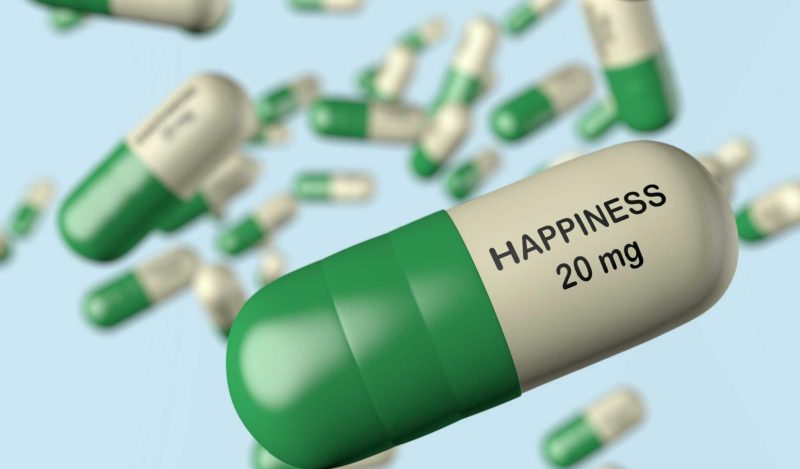A new analysis finds that Prozac (generic name fluoxetine) is unsafe and ineffective for treating depression in children and adolescents.
Regulatory documents show that trial participants attempted suicide after taking fluoxetine, but these events were excluded from the final journal publication.
I notified the journal of the new findings, but the editor refuses to correct the record.
Prozac approval
In 2002, Prozac (fluoxetine), manufactured by Eli Lilly, was FDA-approved for the treatment of depression in children and adolescents based on data from two clinical trials.
The two trials were published in peer-reviewed journals in 1997 (Study 1) and 2002 (Study 2).
Both publications reported a small benefit of fluoxetine over placebo in young people with depression and there appeared to be no major safety concerns.
Subsequently, fluoxetine became one of the most prescribed antidepressants for children aged 0-19 years in the US, and is in the top 5 most prescribed antidepressants in England.
Restoring old trials
An initiative called Restoring Invisible and Abandoned Trials (RIAT) has enabled researchers to “restore” old clinical trial publications by analysing documents submitted to drug regulators by the drug companies.
These analyses have revealed that serious drug harms are either underreported or excluded entirely from medical journals.
Physician Peter Gøtzsche and psychiatrist David Healy obtained regulatory documents (protocols and clinical study reports) from UK’s drug regulator (MHRA) of the two fluoxetine trials that underpinned the drug’s approval in 2002.

The discrepancies
Multiple problems were identified when Gøtzsche and Healy compared the clinical study reports of the two fluoxetine trials, with what was published in the medical journals.
Many suicidal events in people taking fluoxetine were either missing or labelled incorrectly in the published reports.
For example, in Study 1, the clinical study report described two patients who’d attempted suicide after 12 and 15 days of taking fluoxetine, but these events were excluded from the journal article.
They found problems with ‘blinding’ in both trials, meaning the trial investigators were likely aware of which patients were on the drug or the placebo.
They also found that people who were recruited into the trial, and who were already taking an antidepressant, were only given one week to “wash out” the drug from their system before commencing the randomisation process.
This caused severe withdrawal symptoms in some participants who ended up in the placebo group, making it difficult to ascertain the true level of harms in the treatment group.
Finally, when Gøtzsche and Healy looked back and analysed the data from the primary outcome – which was depression – there was no meaningful benefit from fluoxetine compared to placebo.
Journals turn a blind eye?
I wrote to both journals asking if the editors would consider correcting the discrepancies and clearly delineate the adverse events that were not reported in the published articles through an erratum.
Neither journal has done so.
The editor at Arch Gen Psychiatry (now called JAMA Psychiatry) rejected concerns about two suicide attempts that were omitted from its publication of Study 1, and has not made any corrections or clarifications.
In response, Gøtzsche said, “It’s totally unacceptable. When attempted suicides are left out of journal articles, which has happened in many such trials, it changes the safety profile of the drugs completely. This is important information that patients should know about before considering taking the pills.”
Gøtzsche drew similarities to another placebo-controlled trial in adolescents which used the drug Paxil (paroxetine).
GlaxoSmithKline’s Study 329 famously claimed that “Paroxetine is generally well tolerated and effective,” but when researchers restored the trial data using regulatory documents, the opposite became true.
“A restoration of the data from Study 329 showed that paroxetine was neither safe nor effective for treating depression in children and adolescents,” said Gøtzsche.
“Many suicidal events on paroxetine had been omitted or given an obscure name such as emotional lability. I consider this fraud,” he added.
The editor at J Am Acad Child Adolesc Psychiatry (JAACAP), which published Study 2 of fluoxetine said they would not respond to criticisms until the discrepancies documented by Gøtzsche and Healy were published in a peer-reviewed journal.
The process took over a year, but Gøtzsche and Healy’s paper has now been published in a peer-reviewed journal and sent to the JAACAP for review.
The JAACAP said in a statement:
JAACAP takes seriously its responsibility to ensure scientific integrity. As stated in the guide for authors, review of post-publication critiques will be managed according to Committee on Publication Ethics (COPE) guidelines. We will let you know the outcome of the review process…
Why does it matter?
The restoration of old trials has revealed to patients and physicians that much of the data in peer-reviewed journals are incomplete, biased, and often cherry-picked.
The exclusion of suicide attempts and suicides distorts the medical literature and prescribing guidelines to such an extent that they cannot be trusted. It also may reduce options for safer, more effective interventions such as psychotherapy.
“I’ve heard from many families whose children committed suicide because of antidepressants. We should not be prescribing them to young people,” said Gøtzsche.
“Our meta-analysis of ten trials showed that psychotherapy halved the occurrence of new suicide attempts in patients admitted after a suicide attempt. Psychotherapy is what they should be getting, not pills,” he added.
Ultimately, it’s the patients who pay the price, sometimes with their lives, from distorted clinical data, and from journals that refuse to correct glaring errors.
Antidepressants like fluoxetine double the risk of suicide and aggression in children and adolescents, they often lead to decreased quality of life, they cause sexual dysfunction in about 50 percent of users, and these harms may continue long after they try to quit.
In conclusion, there seems to be no rationale for using fluoxetine in young people for treating depression – the new analysis concludes the drug is unsafe and ineffective.
Disclosure: I received funding from the RIAT Support Center for publishing two Expression of Concerns in 2021. This piece is reprinted from the author’s Substack
Published under a Creative Commons Attribution 4.0 International License
For reprints, please set the canonical link back to the original Brownstone Institute Article and Author.









